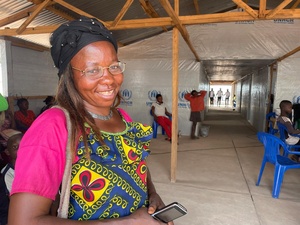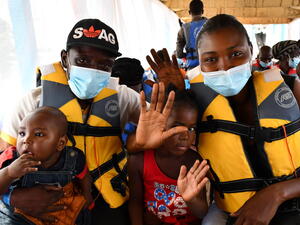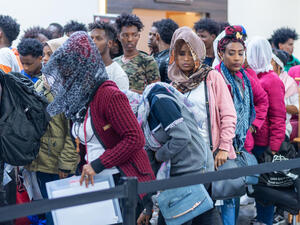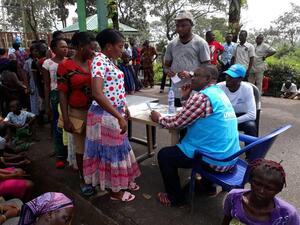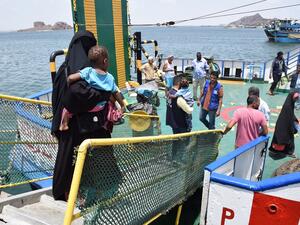Angola: spontaneous returns reach 70,000
Angola: spontaneous returns reach 70,000
The number of spontaneously returned refugees from neighbouring countries into Angola is now estimated to have reached more than 70,000 people. This figure includes 47,000 returnees who have been officially registered by local government authorities or NGOs working on behalf of UNHCR, plus some 25,000 reported but not yet officially registered. The main areas of return are four provinces bordering the Democratic Republic of Congo (DRC) and Zambia - Uige and Zaïre, and Moxico and Cuando Cubango.
In addition, an estimated 860,000 internally displaced persons are believed to have returned home from within the borders of Angola in the same period.
Returns from neighbouring countries started picking up in the immediate aftermath of UNITA leader Jonas Savimbi's death in February this year and the subsequent ceasefire between government and UNITA rebels that brought the 27-year civil war to an end. Returnee numbers started increasing in June and peaked in September, when there were 17,000 registered returns for the month.
The vast majority of registered returns (31,600) are taking place in Moxico province, in the east of the country, followed by Zaïre province in the north.
Local authorities in the northern provinces of Uige and Zaïre reported a surge in returns from the DRC in October. Among the returnees interviewed in Mbanza Congo (Zaïre province), were families who had fled Angola as early as 1961, during the first stages of the independence war. Among them were many children who were born in exile and had never seen Angola.
So far, the majority of returnees are former refugees from rural areas in the DRC's Bandundu and Kasaï provinces. Many reported harsh living conditions in the DRC, including insufficient food. On returning to Angola, however, they still face a dramatic lack of nearly everything required to begin rebuilding their lives.
Returns from Zambia picked up at the beginning of the year but seem to have slowed since food rations were normalised in July.
UNHCR has strengthened its presence in the north of Angola (Uige and Zaïre provinces) and established a permanent presence in Luena, Luau, Cazombo and Lumbala N'Guimbo in the east (Moxico province).
We are relying on a network of NGOs who have been active in the areas of return, particularly in Uige and Zaïre provinces, where UNHCR had until last year a special programme for internally displaced persons.
Assistance to returnees includes registration; housing in transit centres in Uige and Zaïre provinces; onward transportation to other municipalities; provision of domestic items, tools and seeds for the most vulnerable families; and community-based assistance such as staff and equipment for clinics and rehabilitation of school buildings. UNHCR is also financing adult literacy and vocational training courses, as well as reconciliation activities and awareness programmes on child protection and rights.
Tripartite Repatriation Agreements for the organised repatriation of Angolan refugees from the region - based on existing agreements from previous repatriation attempts between Angola, UNHCR and Zambia and Namibia respectively and setting out conditions for the new repatriation - are scheduled to be signed at the end of this month. In January 2003, UNHCR will carry out a "repatriation test" from camps near Kimpese, in the DRC, to Zaïre province in Angola. Organised repatriation will, however, only start after the end of the rainy season in May/June 2003.
The repatriation could one of the biggest in recent years, with more than 450,000 refugees living in Zambia (211,000), the DRC (193,000), Namibia (24,500) and South Africa (10,000), and the Republic of Congo (16,000). In addition, there are an estimated 50,000 Angolan refugees in countries outside the African continent. After the repatriation has concluded, Zambia has agreed to consider naturalising remaining Angolan refugees who were born on its soil or have been in Zambia for over 30 years.


